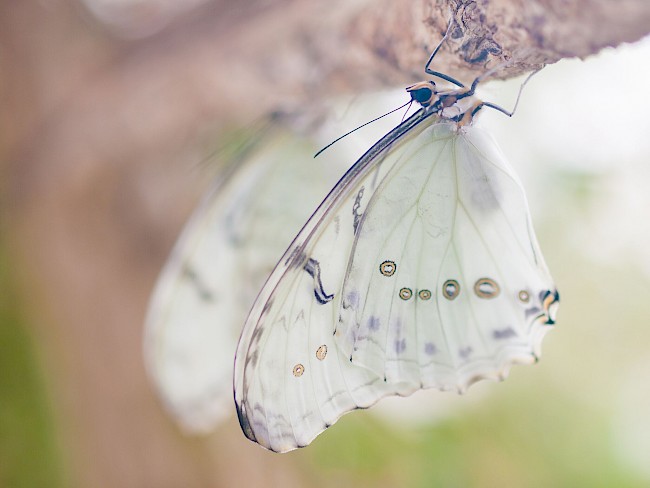Afterword
New immortalities?
—
The sociality of the body at death is a realm of both productive and problematic binaries operating as technologies of division and reintegration, distinctions that continue to be drawn as donors, families, caregivers, and biomedical staff struggle with the practice of donation within the cultural and rhetorical landscapes described in this collection. Unease arises when that which is given as a gift enters circulation patterns that resemble commodity chains. Medical students struggle as they negotiate the line between the training cadaver and the recently deceased person. The papers collected here show how such poles are produced and sustained, and how these oppositions operate as technologies of division and reintegration. Through our interest in how the intentionality of the living is extended beyond death, we find death configured by the demands placed on cadaveric tissues, for their therapeutic, educational, and research purposes. In this uneasy pull – between the intentions of the living and the demand upon their deceased remains – lie profound questions for enacting ethics and obligations.
Piers Vitebsky, in his 2006 Henry Myers Lecture (published in 2008) describes how the Sora of Orissa, India, experience their attachments to, and detachment from, the dead. This, he writes, may involve ritual dismissal, the nourishment of crops through the souls of the deceased, newborns named for them and finally, a second Underworld death resulting in butterflies that become ‘the lonely residue of persons … people who do not quite cease to exist but with whom there is nothing left to be said’ (Vitebsky 2008, 248, drawing on Vitebsky 1993, 231–35). The idea of ‘new immortalities’ that we have sketched out in this collection draws renewed attention to the way processes of attachment and detachment from the dead are handled, how their intentions are honoured, and how the desire to live on can, through biomedical need and facilitation, take form. These are varied and ubiquitous but universal in their quest to bring meaning and significance to the relationship between personal loss, collective beliefs, and values and the brute materiality of the corpse. This relationship has typically been seen as the domain of religion. Yet one of the questions this collection asks is ‘what does death look like without religion?’ Cannell (2011) has recently approached the same query through examining the contemporary upsurge in interest in family history and genealogy in the United Kingdom. She argues that: ‘the way in which people describe things as “religious” or “not religious” (or “spiritual” rather than religious’) is itself the outcome of a specific history, and a reflection of the prevailing culture of secularity that makes it difficult to articulate or inhabit certain forms of experience against the rationalist mainstream (Cannell 2011, 475).
The ethnographies we have assembled here point to a new area in which Cannell’s intriguing observation can be explored. In the emerging bridge between biomedical science and mortuary practices, and between tissue economies and what we have identified as moral economies, lies an opportunity to explore these broader intersections of belief, secularity, and death in the twenty-first century. The breadth of literature being generated at this interface is considerable, yet the processes of attachment and detachment at work are, we suggest, in as much need of attention as those that Vitebsky recounts amongst the Sora. Such attention moves a longstanding theme of anthropological interest around death practices into the biomedical domain, where secularized immortalities dominate. Through acts of postmortem donation, people do not quite ‘cease to exist’; indeed, avoiding nonexistence may be their very intention. But understanding this coming together of private death and public solidarity in the act of donation can be seen in the insertion of the donation imperative into established belief systems, as illustrated in the contributions by Arnason, Douglas-Jones, and Simpson in this volume. It is also evident in the novel acts of memorialisation and dedication that donation makes increasingly available in secular contexts with great variety, as the articles by Hallam and Olejaz indicate. Many of these memorializations and dedications are powerfully reinforced at the level of the state, such as the ‘solidarity’ explored by Adahl. These developments all point towards the ‘new immortalities’ of our title, that is, to practices that see deeply held convictions about what should endure beyond death harnessed rhetorically to the biomedical imaginary. As an analytical frame, new immortalities challenge us to explore donation in its biomedical, secular, religious, and economic guises and ask what, today, may endure after death.
References
Cannell, Fernella. 2011. ‘English Ancestors: The Moral Possibilities of Popular Genealogy’. Journal of the Royal Anthropological Institute 17, no. 3: 462–80. https://doi.org/10.1111/j.1467-9655.2011.01702.x.
Vitebsky, Piers. 1993. Dialogues with the Dead: The Discussion of Mortality among the Sora of Eastern India. Cambridge: Cambridge University Press.
Vitebsky, Piers. 2008. ‘Loving and Forgetting: Moments of Inarticulacy in Tribal India’. Journal of the Royal Anthropological Institute 14, no. 2: 243–61. https://doi.org/10.1111/j.1467-9655.2008.00500.x.
